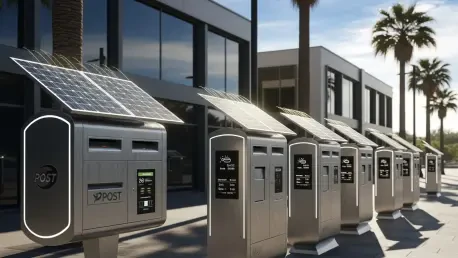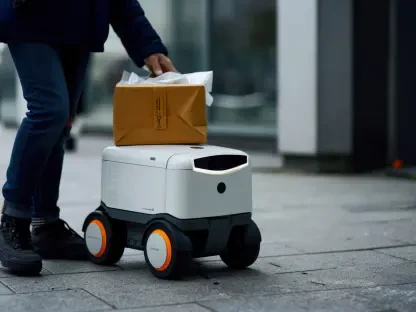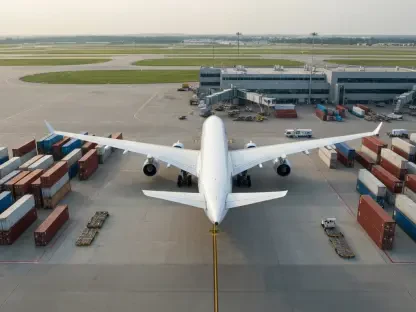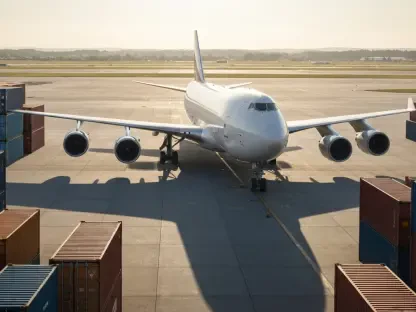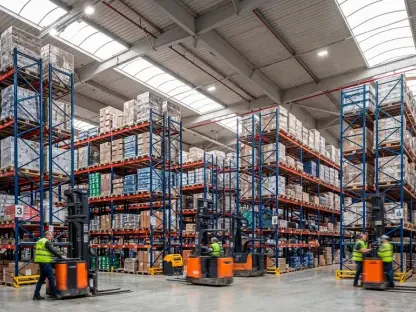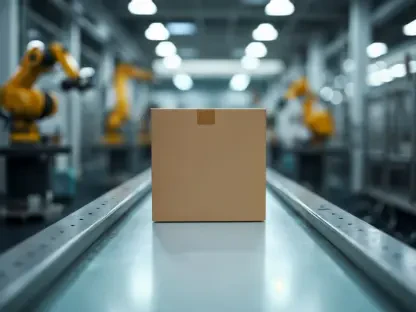What happens when a 175-year-old institution decides to embrace the cutting edge of technology? Picture this: a familiar red postbox on a quiet street corner, now humming with solar energy, ready to scan barcodes and accept parcels with a digital drawer. Royal Mail has rolled out 3,500 of these solar-powered, digitally-enabled postboxes across the UK, transforming the way parcels are sent and returned. This isn’t just a minor update—it’s a seismic shift for a postal service adapting to the demands of a digital, e-commerce-driven world.
The significance of this innovation cannot be overstated. With online shopping continuing to dominate consumer behavior, the need for accessible, efficient parcel drop-off and return options has never been greater. Royal Mail, a cornerstone of UK communication, is meeting this challenge head-on by reimagining its iconic postboxes. This development not only addresses modern consumer pain points but also signals a commitment to sustainability and technological advancement, setting a precedent for postal services worldwide.
A Timely Response to E-commerce Explosion
The rise of online marketplaces and second-hand platforms has created an unprecedented demand for parcel services. Studies indicate that parcel volumes in the UK have increased by over 50% in the last five years, with returns alone accounting for a significant portion of postal traffic. Royal Mail, aware of the strain on traditional systems, identified a gap in convenient drop-off solutions, especially for busy individuals juggling tight schedules.
This initiative comes at a critical juncture, as customers increasingly expect seamless integration of postal services into their daily lives. The solar-powered postboxes are more than a novelty; they represent a strategic pivot toward meeting contemporary needs while preserving the accessibility that has defined Royal Mail for generations. By blending tradition with innovation, the company is ensuring its relevance in a rapidly evolving landscape.
Inside the Tech Behind the Red Box
At the heart of this transformation are the postboxes themselves, equipped with solar panels strategically placed to maximize sunlight exposure. These panels power advanced features like barcode scanners and drop-down digital drawers, enabling users to send or return labeled parcels up to the size of a shoebox. A separate slot for letters ensures that traditional mail remains unaffected by the new functionality.
Beyond the hardware, integration with the Royal Mail app adds a layer of convenience. Customers can track their parcels or request proof of posting directly from their smartphones, a feature now available for smaller parcels across the UK’s network of 115,000 postboxes. With 98% of addresses within half a mile of a postbox, this rollout positions Royal Mail as the most accessible parcel service in the nation, catering to urban and rural communities alike.
The expansion, which began with pilot programs in Hertfordshire and Cambridgeshire, now covers major cities like Manchester, Edinburgh, and Sunderland. This geographic spread, combined with over 23,500 additional service points—including 2,000 parcel lockers and 7,500 Collect+ stores—demonstrates a comprehensive approach to modernizing postal infrastructure. Each element of this system works in tandem to simplify the customer experience.
Real Stories, Real Impact
Feedback from the frontline paints a vivid picture of the initiative’s potential. Jack Clarkson, Royal Mail’s managing director of out-of-home and commercial excellence, emphasized the e-commerce trends fueling this change, noting, “If it’s got a Royal Mail label and fits, just drop it in, and we’ll take care of the rest.” His words underscore a commitment to effortless service that resonates with today’s fast-paced lifestyles.
Early users in pilot areas have shared positive experiences that highlight the practical benefits. A resident of Hertfordshire mentioned the relief of returning an online purchase without needing to visit a post office during limited hours. Such anecdotes reveal how these postboxes are solving real-world frustrations, making postal services more approachable for a tech-savvy generation while retaining their core reliability.
In larger cities like Sheffield and Nottingham, the response has been equally encouraging, with reports of increased usage for both parcel sends and returns. These stories, paired with leadership insights, illustrate a shared vision of accessibility and innovation, grounding the technological leap in tangible human impact.
Navigating the New System with Ease
For those eager to engage with this updated service, the process is straightforward and user-friendly. Start by ensuring the parcel is labeled with a Royal Mail barcode and fits within the size limit—think shoebox dimensions. Oversized items can be handled at alternative locations like parcel lockers or Post Office branches, part of the broader 23,500-strong network of service points.
Finding a solar-powered postbox is simple through the Royal Mail app or website, which map out the nearest of the 3,500 new units or other drop-off options. Once located, scan the label, deposit the parcel via the digital drawer, and use the app to track its journey or secure proof of posting. This streamlined approach eliminates unnecessary steps, saving time for users across the board.
An added tip is to explore the variety of service points for flexibility. Whether it’s a Collect+ store for late-night drops or a Customer Service Point for personalized assistance, Royal Mail’s extensive infrastructure ensures that no customer is left without options. This adaptability makes the system inclusive, catering to diverse needs and schedules.
Sustainability Meets Service in a Digital Age
A standout aspect of this rollout is the fusion of technology with environmental mindfulness. The use of solar power to operate these postboxes reflects a broader push toward sustainable practices in public services. While specific data on energy savings or carbon reduction isn’t yet available, the move aligns with growing consumer and corporate emphasis on eco-friendly solutions.
This balance of innovation and responsibility positions Royal Mail as a forward-thinking entity in the postal sector. The initiative not only addresses the logistical demands of e-commerce but also nods to the importance of reducing environmental footprints. It’s a dual focus that could inspire similar transformations in other industries facing the challenge of modernization.
Looking ahead, the potential for further enhancements—such as expanded size capacities or additional digital features—offers exciting possibilities. Royal Mail’s willingness to adapt suggests that this is just the beginning of a larger evolution, one that prioritizes both customer convenience and planetary health in equal measure.
Reflecting on a Milestone Achieved
Looking back, Royal Mail’s introduction of solar-powered postboxes stood as a defining moment in the history of UK postal services. It marked a successful adaptation to the digital era, addressing the surge in online shopping with a solution that was both innovative and accessible. The integration of technology into an iconic symbol had reshaped public perception of what a postbox could achieve.
The expansion of service points and digital tools had empowered customers, making parcel handling a seamless part of daily life. Moving forward, the focus shifted to scaling these advancements, exploring how to incorporate larger parcels or enhance sustainability metrics. The journey ahead promised further integration of green technology, ensuring that convenience never came at the expense of environmental care.
Ultimately, the challenge rested on maintaining this momentum—continuing to innovate while preserving the trust and familiarity that defined Royal Mail. Stakeholders and customers alike were encouraged to stay engaged, exploring nearby postboxes or service points to experience this transformation firsthand. The path forward was clear: build on this foundation to redefine postal services for generations to come.
